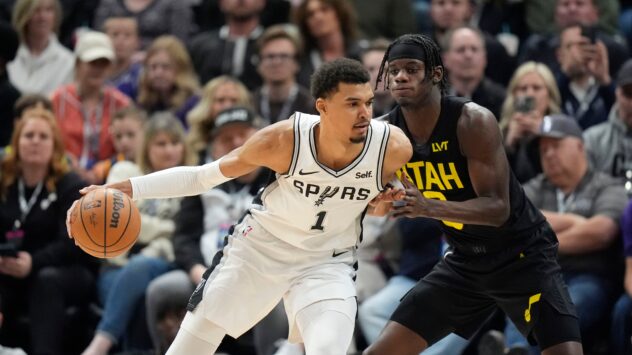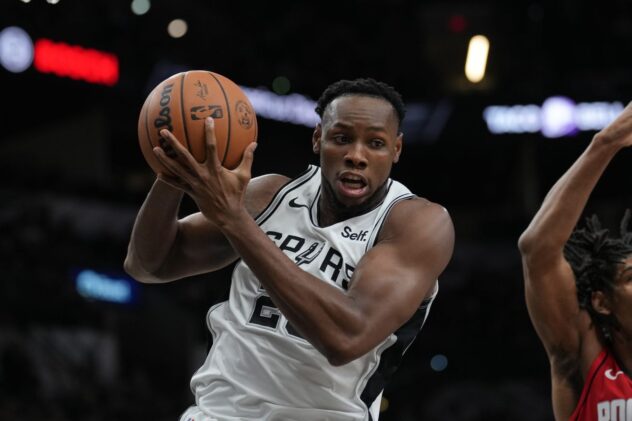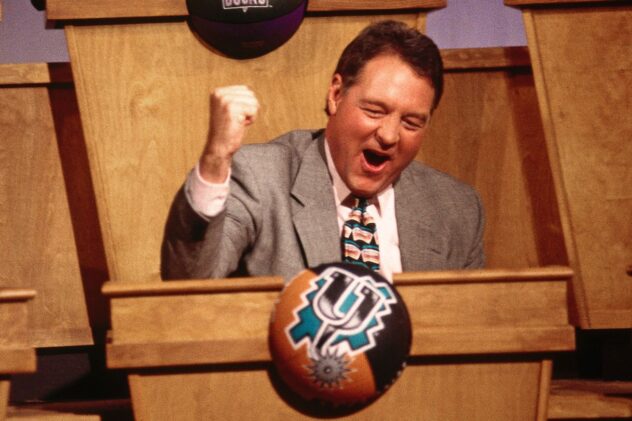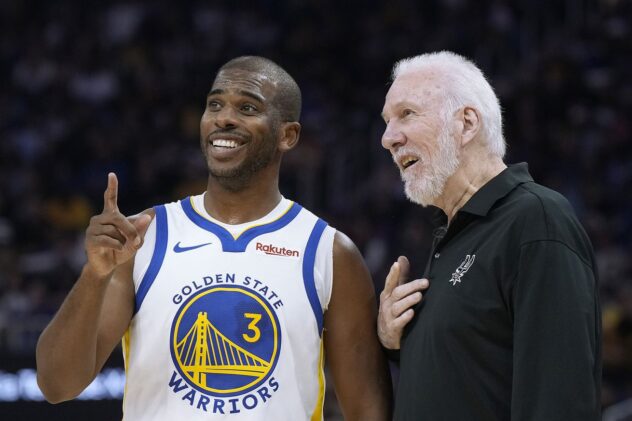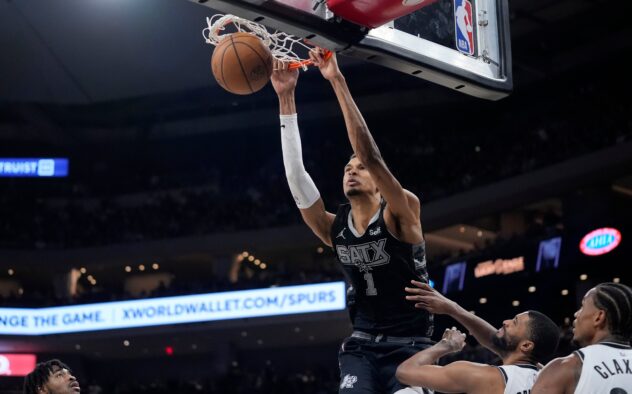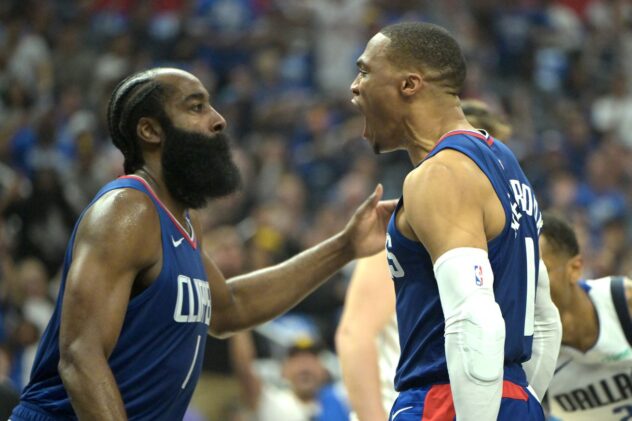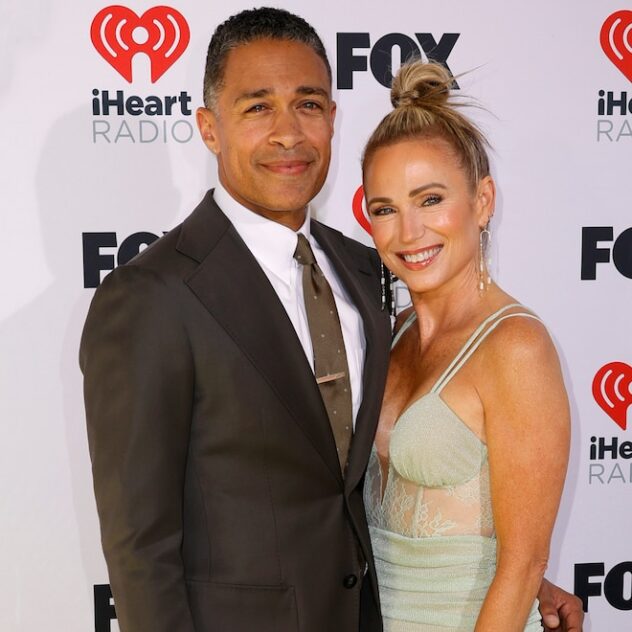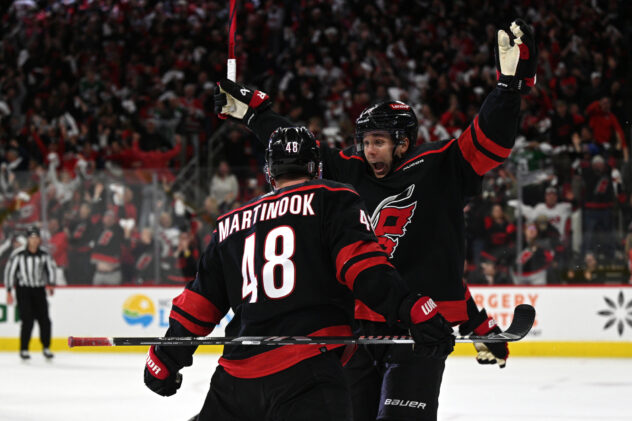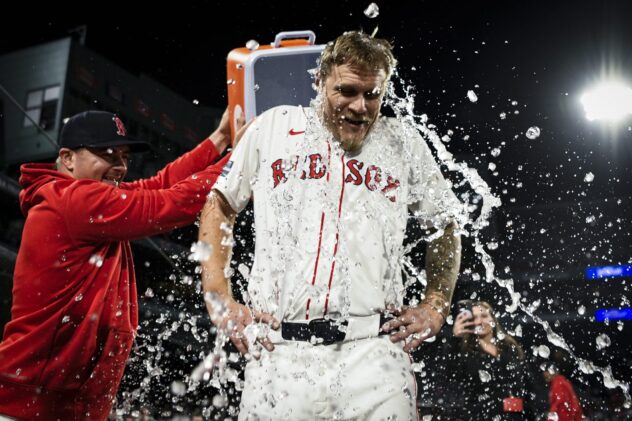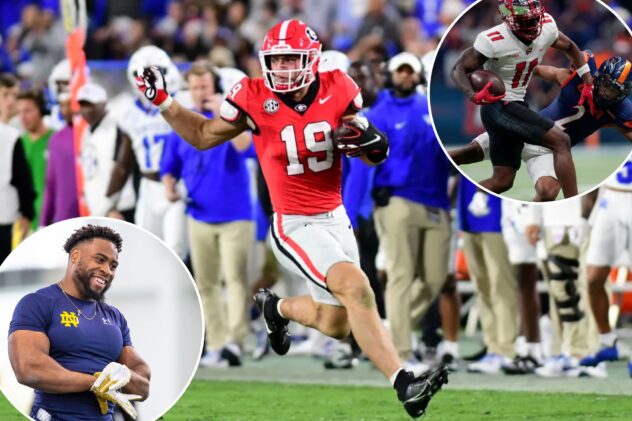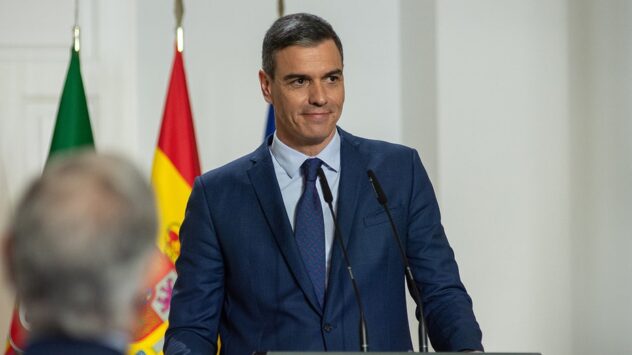Jakob Poeltl is at the center of the Spurs’ half-court show
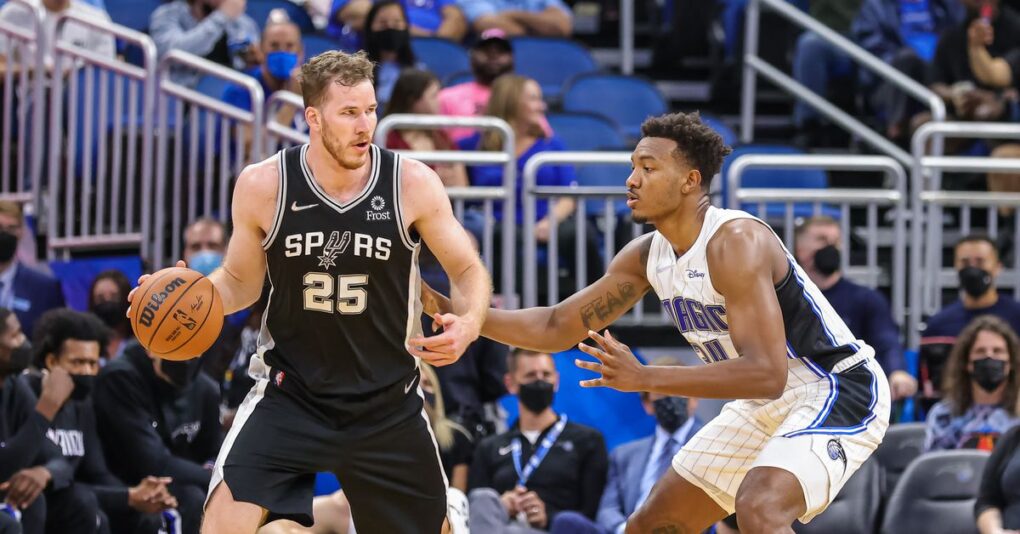
This time last year, Jakob Poeltl’s immediate future in San Antonio felt up in the air. The big man who’d arrived in 2018 as an accessory to the Kawhi Leonard trade was entering restricted free agency, with no certainty around the team’s willingness to match any exorbitant offer sheets he may sign. Centers, especially traditional non-floor spacers like Poeltl, have become the running backs in the NBA, a position that’s seen its value decrease as front offices reallocate resources and plug roster holes with bargain contracts. Combine that with Poeltl’s suboptimal fit alongside LaMarcus Aldridge, and it was fair to wonder if an opportunistic suitor might pry him away.
The two sides ultimately agreed to a three-year, $26.3 million deal before he signed an offer sheet, setting the stage for a new chapter for both player and team. Poeltl earned the full-time starting job in the first few months of the 2020-21 season, and Aldridge moved on shortly after, leaving the team to better shape its system to Poeltl’s strengths.
As Poeltl begins year two of that contract, he’s been worth every penny, offering not only the stout rim protecting he was known for but also making a larger impact on the other end of the floor. Following a career-high 27 points versus the Lakers on Wednesday, his per-game averages stand at 16 points (on 72.1% shooting), 10.8 rebounds, and 3.5 assists. Whether those figures hold up is hard to say but, for now, Poeltl’s one of only six players that meet all three thresholds, (the other five being All-Stars).
“I guess we’re passing the ball to him a bit more,” said Gregg Popovich with a smile and shrug on Wednesday when asked if anything new is behind Poeltl’s assist totals in particular, which trail only guards Dejounte Murray and Derrick White.
The numbers definitely back Pop’s statement. Through the first four games of the season, Poeltl easily paces the team in front-court touches with 40.5, the 18th highest average in the league. When he’s not facilitating, he’s usually directly involved in the action, setting screens and rolling, an area he’s continued to improve upon. As things stand, he’s fifth in the league in number of possessions finished as a roll man, and in the 81st percentile in efficiency averaging 1.22 points per possession.
Poeltl doesn’t always finish with authority around the rim, but his percentages near the basket have consistently been solid. On Wednesday he seemed more willing to gather himself aggressively, let those eyes roll into the back of his head, and throw it down, but the craft he shows on below-the-rim finishes should also be appreciated. On the play below, he does a quick pump on his first step that throws DeAndre Jordan off just enough to set up the lay-in.
If he catches the ball earlier off the pick-and-roll, Poeltl’s not exactly in no man’s land, either, comfortable passing out of the short roll or, if given space, putting the ball up. Despite being awful from the free throw line, he has a dependable touch a step or two closer and has made 4 of his first 7 floater attempts this year.
For the Spurs, working the offense through a big isn’t new. Aldridge consistently anchored possessions and led the team in touches in all but one Kawhi Leonard season, and before that it was a guy named Tim Duncan. But systems adapt to new times and players’ strengths, and it’s obvious that Poeltl isn’t going to be operating heavily out of the block like his predecessors did. Instead, he primarily facilitates from the elbows or top of the circle, where he’s not a threat to score but still keeps things moving.
In most sets, the de facto point guard wastes no time in getting the ball to him at the top of the arc to initiate a possession. This allows Poeltl to either swing the action, hand the ball off to a shooter curling around him or, if the chance presents itself, hit a cutter.
The Spurs run a handful of similar sets from which can spur dozens of possibilities based off reads and coverages. Players like Doug McDermott need to be respected for their outside shooting, which opens up backdoor cut opportunities.
Poeltl has looked like a more willing passer to cutters compared to the conservative, low-usage of years prior. He’s also working with a group better suited to cutting and relocating.
Hand-offs are a big part of the Spurs’ motion-heavy offense, again mostly working through Poeltl. There are small wrinkles to appreciate based on who he’s playing a two-man game with, and with Murray he knows to plant himself well inside the arc to set up a jumper that guard can confidently step into.
The Spurs offense asks everyone to improvise, read and react. Murray goes away from Poeltl below and, rather than the offense requiring a full reset, White makes a timely cut and is fed by Poeltl, finishing through contact.
This is a team that welcomes that kind of extrapositional facilitating, for reasons already written about at length. It’s also a roster short on depth behind Poeltl. In the long run, the Spurs would still like to have a perimeter player who can dependably iso, pull up from three, and get buckets, especially to ice games like Wednesday’s loss to the Lakers; in lieu of that, it helps to have a system in place that will create enough traction to hang with opponents, and a piece who can prop that system up. Poeltl still has room to grow on that end of the floor, but the strides made within an evolving offensive system make him invaluable to what Pop and Co. try to do on a nightly basis.

